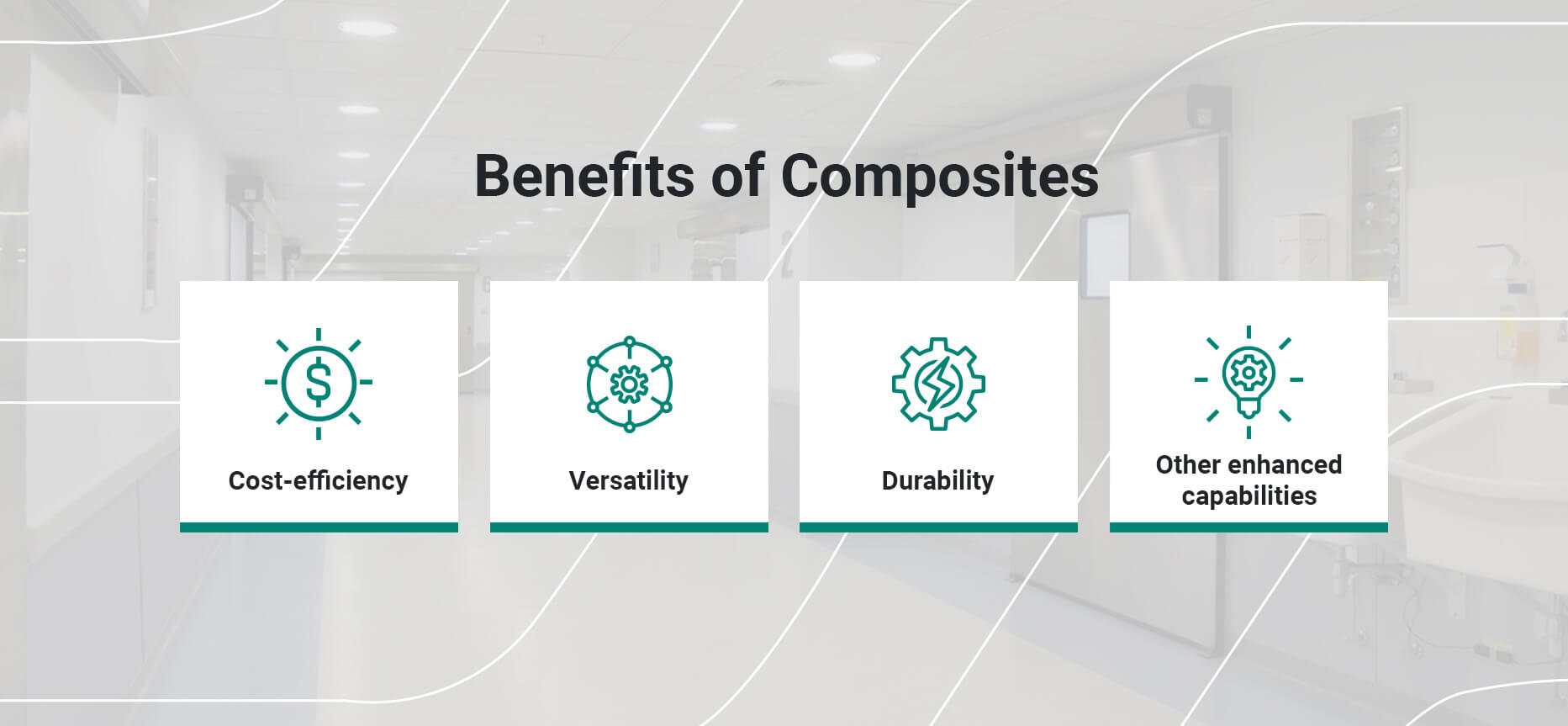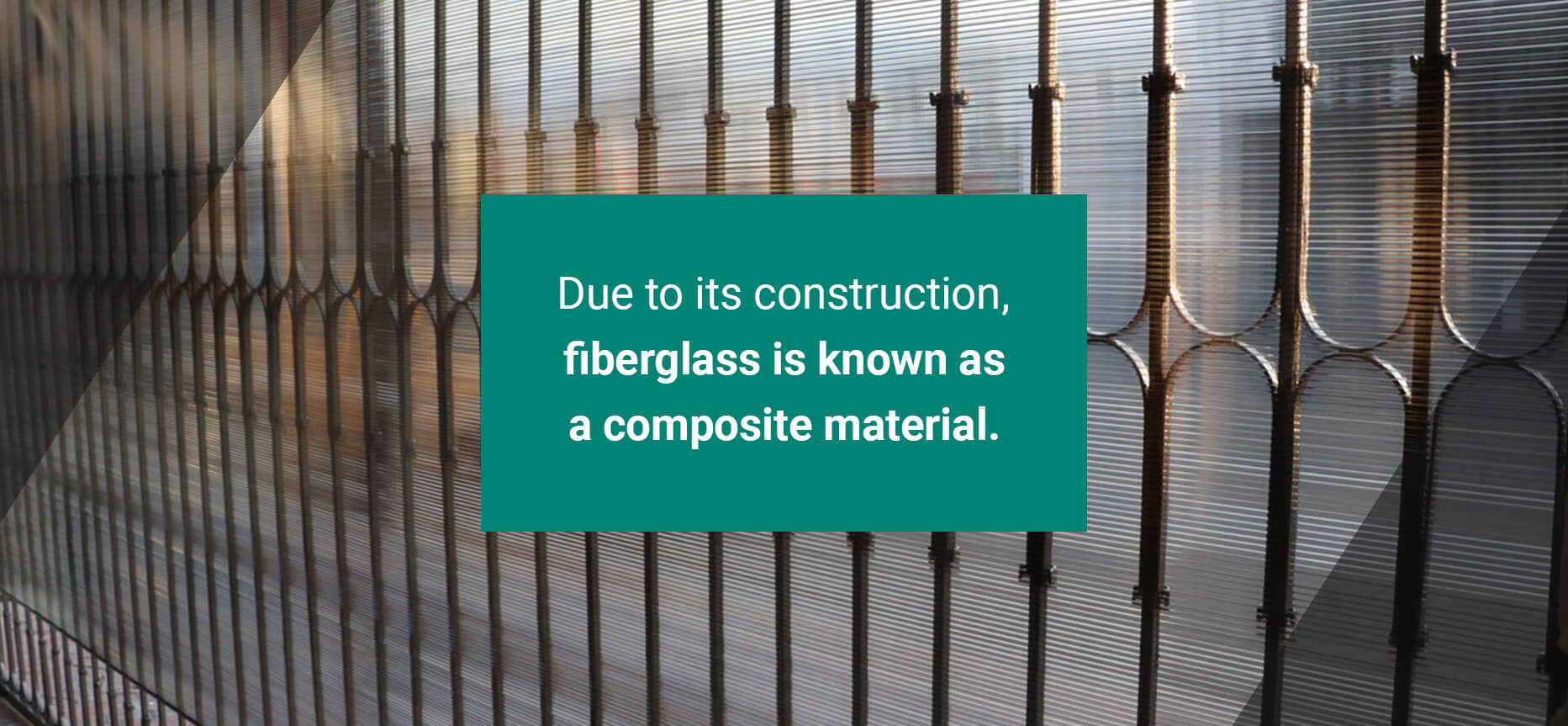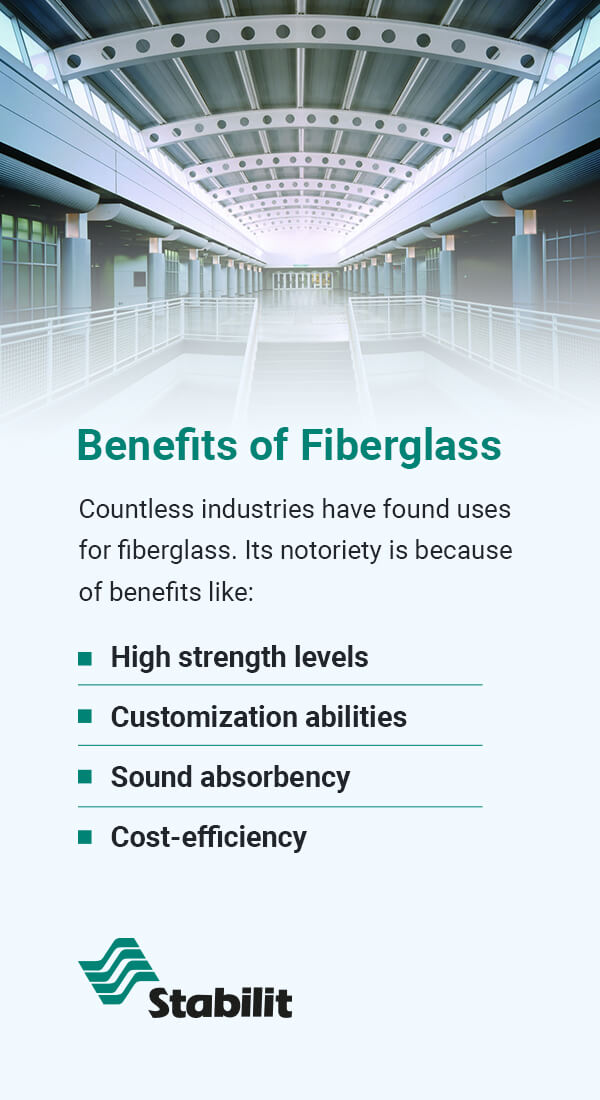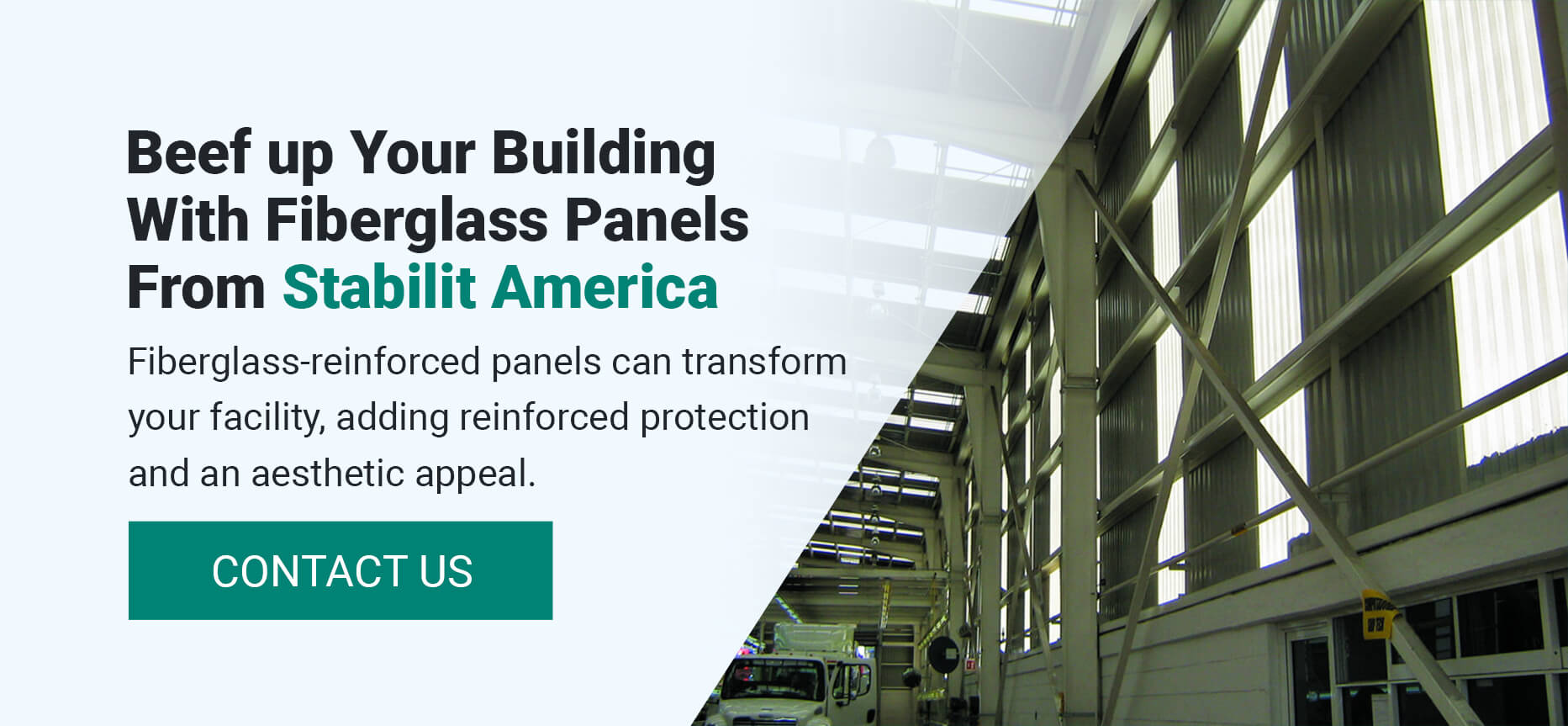Composites are common in all industries. These materials consist of two separate components, each with different physical and chemical properties. When you combine these components, you can create a stronger and more advanced material than they would by themselves.
You can find composites in a wide range of applications, from bridges to household appliances like microwaves. One notable example of a composite is fiberglass. This durable material is known for its malleability and durability, making it a popular choice for many industries and applications.
Read on to learn more about composite materials and fiberglass composites.
What Is a Composite Material?
Composite materials are combinations of two components. The two materials have different chemical and physical properties, creating a stronger material when combined. Both contribute their best attributes to form a specialized product.
Composites improve the qualities of their base materials. In most cases, manufacturers design composites with a specific use in mind. You could fashion a composite with enhanced strength or resistance to electricity.
Due to their durability and cost-efficiency, composites are popular in a wide range of industries. They can consist of both natural and synthetic materials. Here are some common examples of composite materials:
- Engineered wood: Engineered wood is a common material for many construction projects and building materials. This composite consists of real wood and adhesives, with the resulting products becoming more durable than regular wood pieces. You could also add capabilities like water resistance. Products like plywood and particleboard are examples of engineered wood.
- Reinforced concrete: Another notable composite is reinforced concrete, which contains concrete and steel bars. The reinforced steel typically has higher tensile strength, creating a more durable material overall. Reinforced concrete provides advanced strength for buildings and other structures.
- Plastic-coated paper: This composite combines plastic with paper to create a tougher material. For instance, playing cards typically contain this composite.
- Reinforced plastics: These materials feature a polymer matrix and reinforced fibers of glass, carbon or other components. Fiber-reinforced polymers are common in industries like aerospace and construction.
How Are Composites Formed?
You can form composites with a variety of techniques, including:
- Compression molding: In this method, you place a combination of materials into a preheated mold. You close the mold and hold it under pressure until the resin cures.
- Injection molding: This technique is similar to compression molding, but you inject the materials instead.
- Wet lay-up: For this technique, you build your initial component in a mold. Then, you apply additional reinforcement and wet resin layers until you reach the thickness you need for your composite.
Benefits of Composites
Composites are a popular selection for many applications. From electrical equipment to aerospace products or wall panels, you can find composite materials in many aspects of everyday life.

People choose composites over standalone materials for their many benefits, such as:
- Cost-efficiency: Composites provide a more cost-effective manufacturing method than other materials like metals. You mold them precisely, not allowing for any wasted materials or costs. Composites can also have lower costs per volume because they have less weight and overall volume. Using composites can also help you reduce expenses in other ways. For instance, a car featuring composite materials could be more lightweight and lead to better fuel efficiency.
- Versatility: You can combine a wide range of materials to form composites. And you can use composite materials to create specific shapes, products, designs and more. Their versatility makes them an excellent choice for many industries, products and applications.
- Durability: One of composites’ most notable benefits is their durable nature. By combining two features, you can create a stronger material overall. They can maintain their structure even in fatiguing environments, and their strength allows them to withstand heavy loads and harsh conditions. Many composites also require little maintenance, meaning they can maintain a high-quality condition without much additional help.
- Other enhanced capabilities: Composites can also have advanced features that make them even more useful. Many composites have corrosion-resistant properties. Even in harsh weather, the materials resist wear and rust formation, maintaining their strength. Composites could also have electrical insulation, fire resistance or waterproofing.
History of Composites
Manufacturers have used composites for centuries, which shows their useful and valuable nature. Here are some critical moments in the developmental history of composites:
- Ancient times: Composites originated thousands of years ago, when people started using them in daily applications. Many historians credit the first use of composites to the Mesopotamians around 3400 B.C., when they created plywood. They glued wood together at specific angles and realized this construction was more durable than a single piece of wood. Egyptians and Mesopotamians also combined straw with other products like pottery. Many builders and artisans used a variety of composites throughout the ancient period.
- Early to mid-1900s: Once we reached the early 1900s, new chemical advances allowed for the creation of plastic. In 1907, Dr. Leo Bakeland created the first synthetic plastic. This plastic material was reinforced with resin and formaldehyde, making it a notable composite. Then, Hermann Staudinger proved the existence of polymers in 1920. Composite manufacturing developed even further with the production of the 1954 Chevrolet Corvette, which featured a composite-based body made up of fiberglass-reinforced plastic.
- Late 1900s to 2000s: The late 1900s and early 2000s also saw more composite developments. Composites became more popular for tools like poles, insulators, vehicles, small appliances and electrical infrastructures. Researchers and scientists are still completing composite research today. The modern age tends to be more interested in environmentally friendly products, so composites that meet these needs will likely grow in popularity.
Each type of composite comes with its own rich history. One example is fiberglass, invented first as a “glass wool” in the early 1900s by Games Slayter. Manufacturing advancements made the material more versatile, and now we see fiberglass in a range of applications today.
What Is Fiberglass Made Of?
Fiberglass is made from a combination of glass fibers and polyester resins — it’s not carbon fiber. The resin reinforces the glass shards, creating a strong and lightweight consistency. During construction, manufacturers flatten the glass fibers into a sheet, weave them into fabric or use another strategy. You can add different resin types to the composite to make it less brittle and tougher. Vinyl ester is a particular example of polyester resin that can enhance corrosion resistance.
In most ways, fiberglass acts like regular glass — it doesn’t absorb moisture or form rust. You can also mold fiberglass into desired shapes and designs. Its malleability makes it a strong choice for a wide range of products, from bathtubs to boats. You can sell fiberglass as a raw material or use it in manufacturing to create other products. Some manufacturers use an additional gel coating to reinforce fiberglass further.
Types of Fiberglass
Fiberglass is available in a variety of thicknesses, strengths and materials. Manufacturers categorize fiberglass into different types based on their properties and glass orientation.
Here are some examples of the major types of fiberglass:
- A-glass: This type of fiberglass is also called alkali glass. It has many similarities to the glass used in windows. A-glass is an ideal option for manufacturers due to its chemical resistance, low cost and durability. It resists chemicals and maintains its structure after exposure, making it an excellent material for many applications. In some areas, manufacturers use A-glass in processing equipment. It’s also common in food containers, like jars and bottles.
- C-glass: C-glass is also referred to as chemical glass. This fiberglass type has the highest resistance against chemical impacts. Its structure gives it maximum protection against corrosion and other harmful chemical reactions. Because of its durability, manufacturers and engineers use C-glass in chemically exposed environments. You can find C-glass in the outer layers of pipes or chemical tanks.
- E-glass: E-glass is also known as electrical glass. It has a lightweight consistency and excels at insulating electricity. E-glass can also resist heat and maintain its strength in a variety of different conditions. These properties make it a strong choice for applications in aerospace, marine and industrial applications.
- S-glass: S-glass is also called structural glass. This glass type has extreme tensile and acidic strength. Due to its high strength levels, manufacturers develop this type for the defense and aerospace industries. However, S-glass is typically produced less often than other types, making it a more expensive option.
In addition to these types, fiberglass is available in different physical forms, including:
- Tape: Fiberglass tape consists of glass fiber yarns. This option has excellent thermal insulation. You can use fiberglass tape in a variety of applications, but many use it as reinforcement material. You could apply fiberglass tape to a hole in drywall or to reinforce seams in a boat.
- Cloth: Fiberglass cloth has a smooth consistency. Manufacturers often use it in heat shielding applications, such as fire curtains.
- Rope: Fiberglass rope is a useful material for many industries. Manufacturers braid glass fiber yarns into a rope structure. It’s used for packing and securing items.
Is Fiberglass a Composite or a Polymer?

Due to its construction, fiberglass is known as a composite material. As mentioned, composites form when two separate materials combine and form a more enhanced product. Fiberglass consists of glass shards and polyester resin, and when these two are molded together, it creates a stronger and improved material.
Fiberglass composites provide more advanced capabilities than just glass or resin alone. For instance, the material becomes more lightweight and has electrical insulation properties.
Overall, fiberglass is an extremely popular composite for many products and applications, from aerospace vehicles to roofing panels.
What Is Fiberglass Used For?
Fiberglass’s many beneficial properties make it a frequent choice in many industries. Its durability, thermal insulation and malleability are ideal for a wide range of applications.
Here are examples of common industries that use fiberglass:
- Manufacturing: You can use fiberglass in many manufacturing applications. It’s often featured in industrial machinery. Fiberglass provides strong insulation for the equipment, conserving its energy. You can also find fiberglass in production areas, like in grating materials, ladders and railings. Its consistency provides slip resistance in wet areas or places where oils are present, which can protect employees in these situations.
- Automotive industry: Fiberglass is also extremely common in the automotive industry. Many structural elements in cars consist of fiberglass, from bumpers and hoods to body kits. It’s also frequently used in belts due to its solid structural composition. Manufacturers often choose fiberglass over other typical materials like aluminum because of its lightweight nature and low cost.
- Pulp and paper: Fiberglass is popular in the pulp and paper industries because of its corrosion resistance. You can use fiberglass materials in pulping areas, where it protects against slips. It’s also common in paper machines and stock preparation areas, which are crucial to paper construction.
- Food and beverage industries: Fiberglass has many uses in the food and beverage industries. It’s an excellent option for food storage, like jars. It resists chemicals and protects food and drinks while not in use. You can also find fiberglass in food processing locations, where it serves as a grating material.
- Fountains and aquariums: Fountains and aquariums often use fiberglass in their designs. Fiberglass withstands chemical processes in water-based environments, such as disinfection. In addition, fiberglass can support rocks in water tanks, allowing water to circulate and filter properly. You can also use fiberglass grating in sprayers, light fixtures and other structural elements in aquariums. The material protects these structures from forming rust.
Benefits of Fiberglass
Countless industries have found uses for fiberglass. Its notoriety is because of benefits like:
- High strength levels: Fiberglass won’t rust, degrade or weaken in harsh conditions. It maintains its integrity in a variety of environments, keeping up its high-performance qualities. In turn, industries of all types can use the composite for long-term applications.
- Customization abilities: The material can easily mold into desired shapes, making it ideal for unique applications. With its malleability, fiberglass helps reduce the need for secondary finishes or extra processing. You can create products that meet individual needs, no matter your industry.
- Sound absorbency: Fiberglass also contains sound absorption properties. You can reduce the noise levels of machinery, lowering the risk of hearing damage.
- Cost-efficiency: Fiberglass is an economical choice for any industry. Its long service life and low maintenance needs reduce the need for replacements. Using fiberglass can also minimize waste production because the materials last for extended periods.
Beef up Your Building With Fiberglass Panels From Stabilit America
Fiberglass is a popular composite material used around the world. Its durability and versatility make it an ideal choice for an endless number of applications.
At Stabilit America, we understand the necessity of high-quality materials. As a leading manufacturer of fiberglass-reinforced plastic panels, we provide durable and long-term solutions for a wide range of industries. Our fiber-reinforced plastic panels serve industrial, commercial and residential applications.
Fiberglass-reinforced panels can transform your facility, adding reinforced protection and an aesthetic appeal. We offer roofing, siding and liner panels to meet a variety of needs. Our materials are high-strength and corrosion-resistant, providing a long-term solution.
To get started with Stabilit America, browse our products and contact us today.




